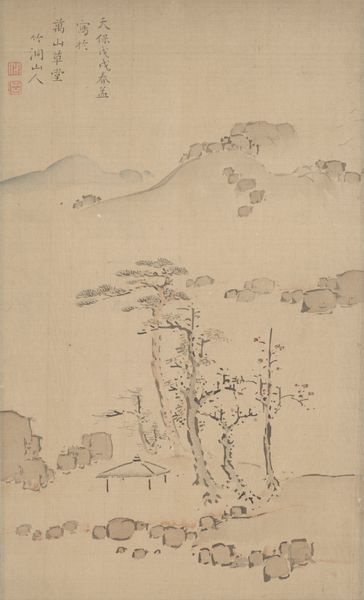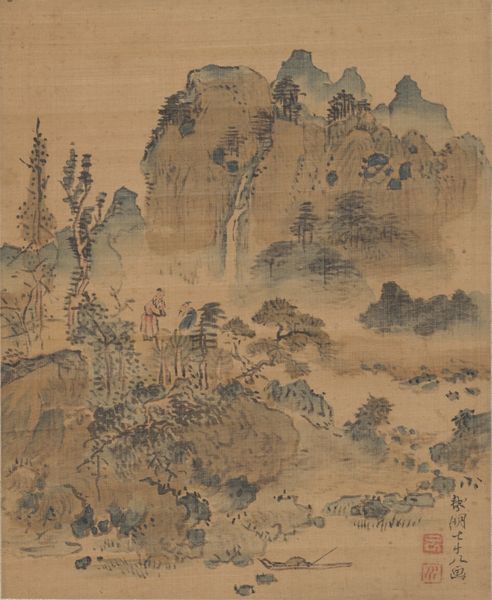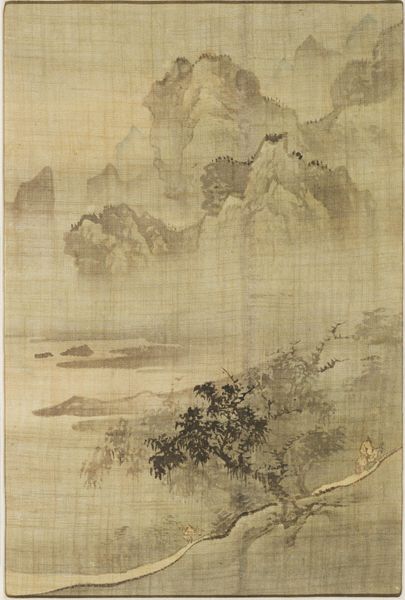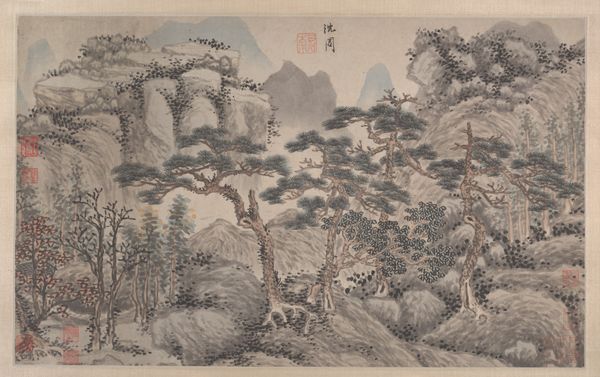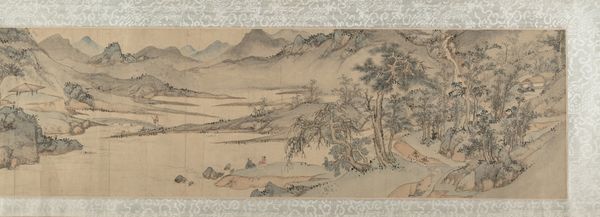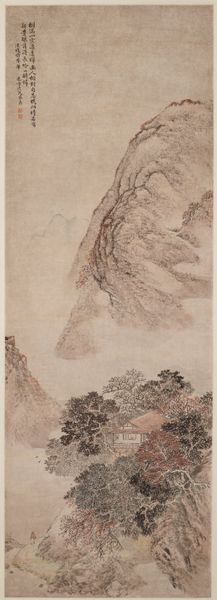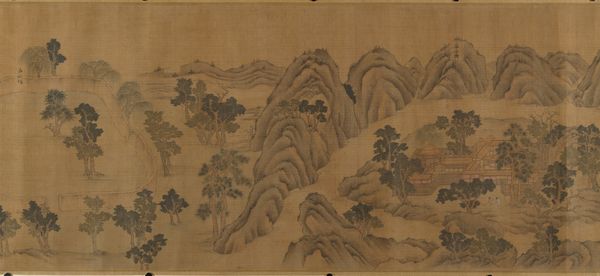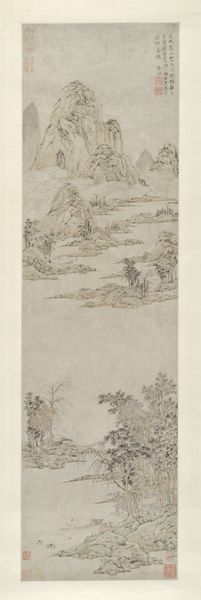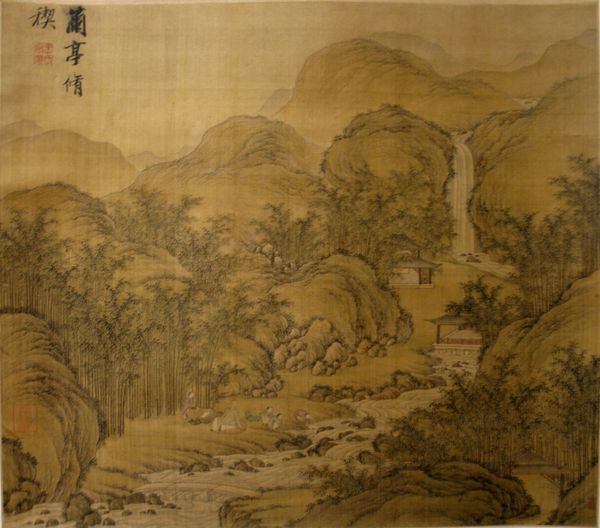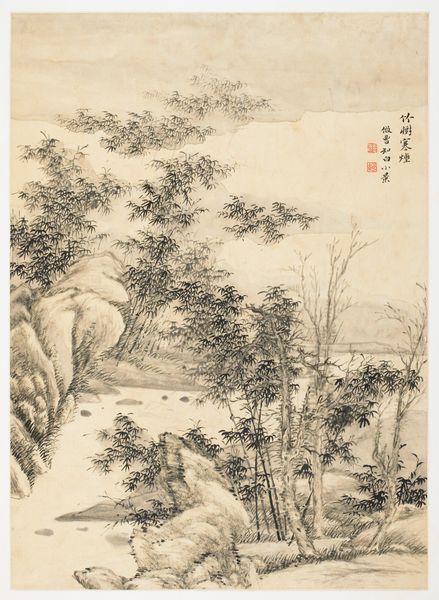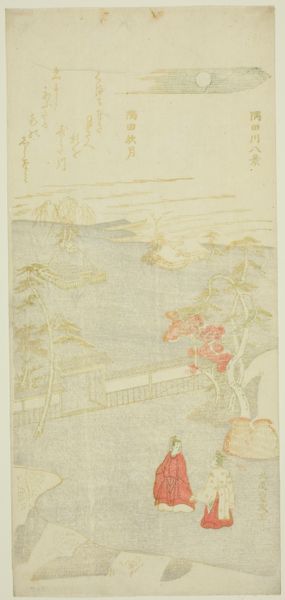
Scholar Crossing Stream in Mountains 18th-19th century
0:00
0:00
drawing, painting, paper, hanging-scroll, ink
#
drawing
#
ink painting
#
painting
#
asian-art
#
landscape
#
japan
#
paper
#
hanging-scroll
#
ink
Copyright: Public Domain
Nakabayashi Chikutō painted this hanging scroll in ink and color on silk, and it presents us with more than just a landscape. It was produced in Japan during the Edo period, a time of relative peace and prosperity under the Tokugawa shogunate. Neo-Confucianism was the official state ideology, emphasizing social hierarchy and the importance of education. This painting reflects the values of the educated elite, the scholar-officials who sought refuge in nature from the demands of public life. The lone scholar embodies the Confucian ideal of self-cultivation through immersion in nature. The misty mountains and tranquil stream evoke a sense of harmony and detachment from the mundane world, as the scholar is dwarfed by the landscape. To truly understand the significance of this work, you might delve into the writings of contemporary scholars, travelogues, and the history of the Kano school of painting, from which Nakabayashi Chikutō drew inspiration. Art, after all, is always a product of its time and place.
Comments
No comments
Be the first to comment and join the conversation on the ultimate creative platform.
